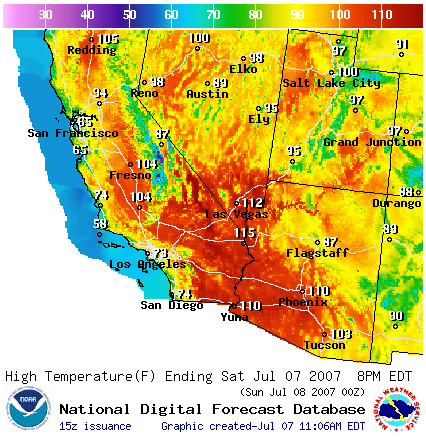 East Valley Tribune (
East Valley Tribune (“The thing I worry about most within the next 10 years is what I call a ‘disaster within a disaster,’ ” said Michael A. McGeehin, director of the Environmental Hazards and Health Effects Division at the federal Centers for Disease Control and Prevention. “If you have 116 degrees for three days in a row here and everybody is using air conditioning, and suddenly they’re not for 48 hours, that’s a disaster within a disaster.” How will people cool off? If they flee the Valley, where will they go and how will they get there? Many of these questions have yet to be answered, explaining why the assembled experts decided to attend the conference, which runs through Friday at
“Because heat has been taken for granted over the years, we don’t have any data to verify whether we’re doing well or whether the systems we have in place are in need of improvement,” said Bob England, director of the Maricopa County Department of Public Health. The urgency to plan for such serious health threats usually takes hold after a natural disaster kills scores of residents, McGeehin said. “You have to learn the hard way,” he said.
The Valley’s eye-opening brush with mass casualties came during the summer of 2005. According to
Vulnerability mapping also can be used to determine if there are connections between extreme heat and violent crimes, Golden said. On that subject, Valley experts will be working with their counterparts from the



No comments:
Post a Comment